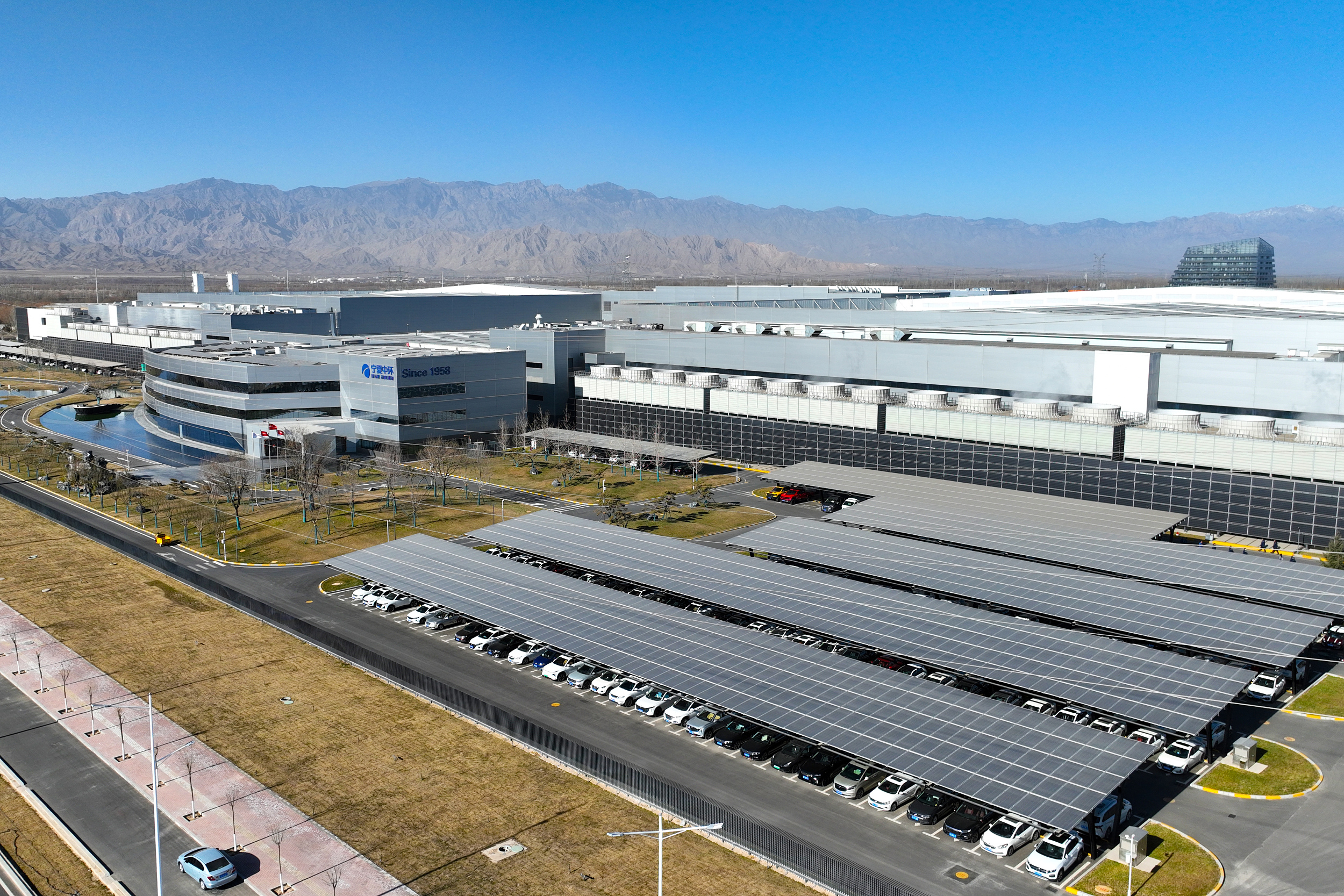
The roofs of the factory buildings in TCL Zhonghuan Ningxia Industrial Park in Yinchuan city are covered with photovoltaic modules, providing green power for the consumption of the factory. (PHOTO: VCG)
By?CHEN Chunyou
China will establish a better institutional system of energy conservation and carbon emission reduction in the construction sector, and implement green building standards in newly-constructed urban buildings by 2025. By 2027, there will be large-scale development of buildings with ultra-low energy consumption. This is the aim of a plan approved by the State Council in mid-March.
To accomplish these goals, measures will be taken to facilitate renovation and upgrade of existing urban buildings and enhance their energy conservation and carbon reduction during their operation. Heat metering management will be intensified, fostering a system of usage-based metering and charging.
According to Xu Wei, chief scientist at the China Academy of Building Research, China has a huge number of buildings; therefore transforming them for energy saving and carbon reduction is loaded with challenges. Over the years, China has been promoting energy saving and carbon emission reduction in existing buildings, and has completed the renovation area of more than 2.4 billion square meters.
The plan also encourages R&D of advanced technologies for ultra-low energy consumption, near-zero energy consumption and low-carbon buildings, and promotes key technology research in areas such as high fire-resistant external wall insulation systems and low-carbon equipment systems. Besides, it stresses supporting qualified enterprises in building R&D and talent training platforms for energy efficiency technologies.
China's renewable energy utilization technology and industrial development have laid a solid foundation for the low-carbon transformation of building energy use. China is the world's largest producer of solar thermal utilization products, photovoltaic products and heat pumps, with leading advantages in market scale, and product performance. It is necessary to accelerate the pilot promotion of integrated construction of photovoltaic systems for new buildings, and strengthen the management of the photovoltaic systems in existing buildings, Xu said.
The trio will conduct a series of experiments in fields such as life science, fluid physics, combustion science and materials science. Notably, this is the first time that fruit flies have been taken on a Chinese space mission as experimental subjects. What made scientists choose fruit flies? What experiment will they undergo?
